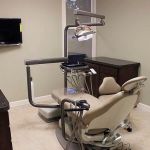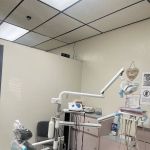Restorative Dental Procedures: What You Need to Know
- 1. Introduction: The Importance of Restorative Dental Procedures
- 2. What Are Restorative Dental Procedures?
- 3. Common Types of Restorative Dental Procedures
- 4. The Benefits of Restorative Dental Procedures
- 5. How to Prepare for Restorative Dental Procedures
- 6. Costs and Insurance Coverage for Restorative Dental Procedures
- 7. Final Thoughts: Why You Should Consider Restorative Dental Care
1. Introduction: The Importance of Restorative Dental Procedures
Our teeth are an essential part of our daily lives—whether it’s chewing food, speaking clearly, or simply smiling confidently. But what happens when they get damaged? Restorative dental procedures come to the rescue. These procedures are designed to restore your teeth to their natural, healthy state, ensuring you can function properly and maintain your confidence. In this article, we’ll explore what restorative dental procedures are, the different types available, the benefits they offer, and how to best prepare for them.
Restorative dentistry has become a crucial aspect of modern oral healthcare, especially as dental technology continues to improve. Many people today choose restorative dental care not just to fix cosmetic issues but also to enhance their overall oral health. Whether you're facing cavities, cracks, or missing teeth, restorative dentistry provides solutions that help you regain a healthy, functional smile. Let’s dive deeper into the world of restorative dental procedures and understand how they can benefit you.
2. What Are Restorative Dental Procedures?
Restorative dental procedures refer to any treatments aimed at restoring the function and appearance of your teeth, gums, and mouth after they have been affected by damage or decay. These procedures can range from simple fillings for cavities to more complex procedures like crowns, bridges, or implants. The goal of restorative dentistry is to restore your teeth to their original state, allowing you to eat, speak, and smile without discomfort or concern.
These procedures also play a key role in maintaining overall oral health. For example, replacing a missing tooth can prevent further dental issues, such as misalignment of other teeth or bone loss in the jaw. Moreover, restorative dental procedures can also enhance the aesthetic appearance of your smile, helping you feel more confident in your daily interactions.
It's important to note that restorative dentistry differs from cosmetic dentistry, which is more focused on improving the appearance of your smile. While both can overlap, restorative dentistry is often more concerned with functionality and health. Now, let's take a look at some of the most common restorative dental procedures available today.
3. Common Types of Restorative Dental Procedures
There are several types of restorative dental procedures, each designed to address specific issues. Some of the most common include:
- Fillings – Fillings are one of the most common restorative procedures, typically used to treat cavities. The dentist removes decayed tissue from the tooth and fills the space with a durable material, such as composite resin, amalgam, or gold.
- Crowns – Crowns are often used to restore teeth that are severely damaged or decayed. A crown is a cap that fits over the remaining part of the tooth, providing strength and protection while improving the tooth’s appearance.
- Bridges – Bridges are used to replace missing teeth. A bridge consists of one or more artificial teeth anchored in place by crowns on adjacent teeth, filling the gap left by a missing tooth.
- Dental Implants – Dental implants are a long-term solution for replacing missing teeth. An implant involves a titanium post being surgically placed into the jawbone, which serves as the foundation for a replacement tooth.
- Veneers – Veneers are thin, custom-made shells that are bonded to the front of teeth to improve their appearance. They can be used to fix chipped, stained, or misaligned teeth.
- Root Canals – A root canal is necessary when the pulp of a tooth becomes infected. The procedure involves removing the infected tissue, cleaning the inside of the tooth, and sealing it to prevent further infection.
Each of these procedures serves a specific purpose, and your dentist will help determine which is best for your unique dental needs. It’s important to understand that restorative dental procedures often involve multiple visits to ensure that everything is done correctly and to allow for proper healing.
4. The Benefits of Restorative Dental Procedures
Restorative dental procedures offer numerous benefits, both in terms of your oral health and your quality of life. Some of the key benefits include:
- Improved Functionality: Restorative dental procedures help restore the proper function of your teeth, enabling you to chew and speak properly. Missing or damaged teeth can make eating or speaking difficult, but restorative procedures like implants or bridges can restore normal function.
- Prevention of Further Damage: Restoring a damaged tooth with a crown or filling can prevent further damage. For example, leaving a cracked tooth untreated could lead to infection or even tooth loss.
- Enhanced Appearance: Many restorative procedures improve the aesthetic appearance of your smile. Crowns, veneers, and fillings can correct discoloration, chips, and misalignments, making your teeth look more natural and attractive.
- Long-Term Health Benefits: Restorative procedures such as implants can help prevent bone loss in the jaw, which often occurs when a tooth is missing. By restoring your teeth, you can maintain the integrity of your jawbone and prevent other dental issues down the line.
- Boosted Confidence: Having a healthy, functional smile can significantly improve your self-esteem. Whether you need a simple filling or a full set of dental implants, restorative procedures can help you feel confident in your smile again.
Overall, restorative dentistry offers a wide range of benefits that can positively impact your overall health and well-being. Whether you’re dealing with cavities, missing teeth, or severe damage, restorative procedures can offer effective solutions to improve both your dental function and appearance.
5. How to Prepare for Restorative Dental Procedures
Preparing for restorative dental procedures is essential for ensuring the best possible outcome. Here are some steps to take before undergoing a procedure:
- Consultation: The first step is to schedule a consultation with your dentist. During this appointment, your dentist will assess your oral health and recommend the best restorative procedures for your needs.
- X-Rays and Imaging: Your dentist may require X-rays or other imaging to better understand the condition of your teeth and jaw. This will help plan the procedure accurately.
- Follow Instructions: Your dentist may give you specific instructions to follow before the procedure, such as avoiding food or drink for a certain period of time. Be sure to follow these instructions closely.
- Post-Procedure Care: After the procedure, you may need to follow specific aftercare instructions, such as avoiding hard foods or taking prescribed medications for pain management.
Proper preparation and following your dentist's instructions will help ensure that the restorative procedure is successful and that your recovery process goes smoothly.
6. Costs and Insurance Coverage for Restorative Dental Procedures
The cost of restorative dental procedures can vary depending on the type of procedure, the complexity of the treatment, and the location of the dental practice. For example, a simple filling may cost less than a dental implant, which involves surgery and a longer treatment period.
Fortunately, many dental insurance plans cover a portion of the cost for restorative procedures, especially when they are deemed medically necessary. However, it’s important to check with your insurance provider to understand what is covered and what your out-of-pocket costs may be.
If you’re concerned about the cost of restorative dental care, it’s a good idea to discuss payment options with your dentist. Many dental practices offer financing plans or payment arrangements to help make restorative procedures more affordable.
7. Final Thoughts: Why You Should Consider Restorative Dental Care
Restorative dental procedures are an essential part of maintaining your oral health and achieving a beautiful smile. From fillings to implants, these procedures provide a range of solutions for addressing common dental issues such as decay, damage, and missing teeth.
By choosing restorative dentistry, you can restore both the function and appearance of your teeth, leading to improved health and confidence. If you're dealing with any dental concerns, consider discussing your options with a trusted dentist. With the right care, you can enjoy a healthy smile for years to come.
Interested in learning more about restorative dental procedures or scheduling a consultation? Visit Dentistry Toothtruth for more information and to find a dentist near you.







 Great Expressions Dental Centers - Peachtree City4.0 (406 review)
Great Expressions Dental Centers - Peachtree City4.0 (406 review) Metropolitan Endodontics4.0 (307 review)
Metropolitan Endodontics4.0 (307 review) St. Mary's Family Dentistry4.0 (243 review)
St. Mary's Family Dentistry4.0 (243 review) Tyler Dental Center5.0 (7 review)
Tyler Dental Center5.0 (7 review) East Valley Periodontics4.0 (993 review)
East Valley Periodontics4.0 (993 review) Dr. Mahtab Azimi, DDS1.0 (1 review)
Dr. Mahtab Azimi, DDS1.0 (1 review) The Importance of Oral Health Education During Pregnancy for a Healthy Pregnancy
The Importance of Oral Health Education During Pregnancy for a Healthy Pregnancy Best Tips for Brushing Your Teeth Properly for Healthy Gums: Essential Techniques for Oral Health
Best Tips for Brushing Your Teeth Properly for Healthy Gums: Essential Techniques for Oral Health Why Skipping Dental Checkups Can Lead to Bigger Oral Health Problems
Why Skipping Dental Checkups Can Lead to Bigger Oral Health Problems Advantages of Porcelain Dental Restorations
Advantages of Porcelain Dental Restorations How Can Diabetes Cause Tooth and Gum Problems? Preventing and Managing Oral Health Issues
How Can Diabetes Cause Tooth and Gum Problems? Preventing and Managing Oral Health Issues Healthy Habits for Promoting Good Oral Health and Hygiene: Tips for a Healthy Smile
Healthy Habits for Promoting Good Oral Health and Hygiene: Tips for a Healthy Smile